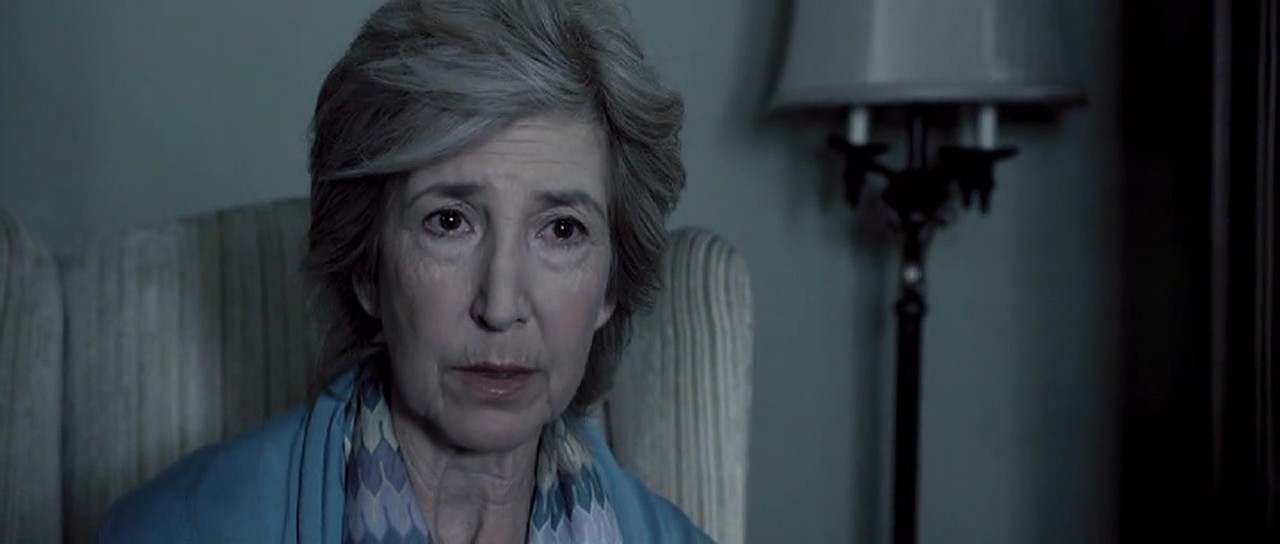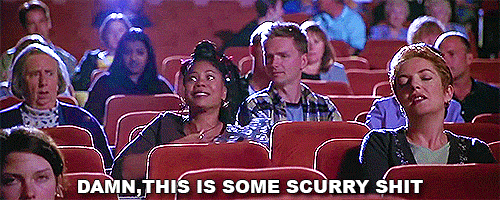I’ve been consuming horror films longer than I’ve been able to write coherent sentences, and no matter how much I age or how de-sensitized to subject matter I become…I still “scream like a girl.” I’ve studied the tropes extensively, and despite the fact I can almost count to the exact moment a scare will take place based on when the score builds up (or dies down), I still curl in my seat with my hands over my eyes and scream like a five year old on a carnival ride. There is an assumption that someone as well versed in horror as I am should be able to watch everything with a stone-face and remain unaffected when jump scares illicit an entire audience to gasp, but I am not one of those people. I’ve been amongst other horror comrades at screenings and more often than not, I’m picked on for being so easily frightened.
Perhaps I’m overly sensitive, but I don’t understand why being scared in a horror movie is considered to be “weak,” “pathetic,” or “immature” in the eyes of many horror fans. Now, I’m not talking about the inability to watch a horror film without having nightmares for weeks. No, I’m talking about the adrenaline rush that forces you to jump out of your skin, or the uncontrollable sounds that echo through your body when you can’t find any other way to express how you feel.
I saw Insidious: Chapter 3 in the theater the other day and despite my obsession with Joseph Bishara’s score, every single jump scare hit me in the face like a bucket of paint in Home Alone. The beauty of Bishara’s score for the Insidious films is the impending dread brought along by the shrill crescendo of strings. You can almost count in time to when the scare is going to hit, and yet it still makes me jump. We’re only four months away from Halloween season, and I’m going to get my yearly influx of invitations to Haunted Houses that I will inevitably decline. I physically, emotionally, and psychologically cannot handle the sensory overload of a Haunted House. I jump in movie theaters just sitting with something in a safe distance in front of me being scary. The last time I went through a spook house I started crying and one of the creatures let me out of the emergency exit because he was afraid I was going to need to go to the hospital. Whenever I decline haunted house invites, I’m often met with the same confusion regardless of who is asking the question.
“You write about horror for a living, how can you be scared?”
I’ll be the first to admit that I’m more than a little bit neurotic. I have borderline panic attacks when I’m running late for something, I worry about everything from rising sea levels to whether or not people think I’m a weirdo for eating at Zoup! by myself, and my neurosis prevents me from being a thrill-seeker in every sense of the word. Horror movies, however, allow me the therapeutic release of adrenaline that feels fun, rather than draining. The fight or flight response wakes up, and overwhelms my brain with feel-good chemicals. It’s a natural high, and one that I crave. Why anyone would want to give up that sensation in favor of appearing “tough” or “fearless” is beyond me. There’s almost a sense of shame brought upon horror fans that admit a film scares them, because too many people equate being scared, with thinking a film is any good. Personally, I didn’t think As Above, So Below was that great of a film, but I will freely admit that I screamed at least three times and jumped twice. All this means is that the film was successful in executing scare tactics, not necessarily executing a quality product.
Jump scares are a combination of tension building, well-crafted sound design, and visual trickery. It’s the moment when the killer sits up after we think they’re dead, it’s the sudden rush of sound after sitting in silence, it’s a friend popping in around the corner after being afraid someone’s following you, or it’s a stupid cat that falls onto the hood of your car after finally feeling like you’re alone. SINISTER co-writer C. Robert Cargill discussed jump scares with: “A good jump scare is a magic trick,” he says. “It’s ‘I’m going to get you to look over here while I’m doing this,’ and then out of nowhere — bam! — something’s going to get you.”
Admittedly, the problem of talking and texting has gotten out of hand in recent years, but it almost feels like people are afraid to respond in the theater out of fear that they’ll be ridiculed or told to be quiet. People aren’t allowing themselves to really let the movie take them over, and therefore, they’re not reacting like they used to. Movie theaters have always been a communal experience, but it feels like it’s something that’s been lost to VOD. Have you ever been in a theater where someone else screams and it makes the moment scarier? Or how about when a moment is building tension and someone lets out an uncomfortable laugh and it causes you to question the fear? How can scary movies work if we don’t allow ourselves to experience the reaction or shun/blame the reaction? It’s like having sex and telling someone “Don’t you dare climax!”
I like to be scared. I like to scream. I like to hide in the seats, and I’m not ashamed of any of it. I love knowing something is going to pop out once the music fades away, I know the monster is never really dead, I know there’s going to be something at the end of the hallway or behind the mirror, and I know I’m going to scream and the entire theatre is going to laugh at me. Quite frankly, I don’t give a damn. No matter how awful the overall film is, if a jump scare gets me, I’ve gotten what I’ve paid for. Does that make me part of the problem, probably, but at least I can admit it.
Support Halloween Love
If an item was discussed in this article that you intend on buying or renting, you can help support Halloween Love and its writers by purchasing through our links:
(Not seeing any relevant products? Start your search on Amazon through us.)



